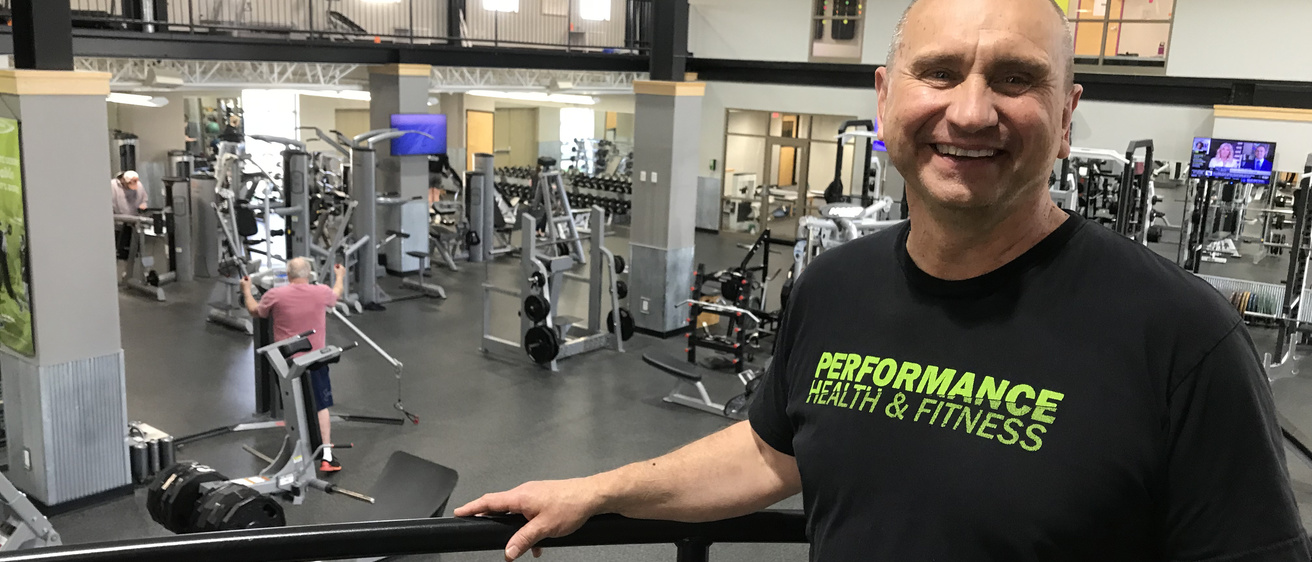In the wind-up years of his three-decade-career as a nursing home and assisted living facility administrator, Monte Priske often found himself seeing prospective clients and thinking, “You shouldn’t be here.”
People who have had active work lives do themselves no favor if they suddenly become sedentary when they retire, he says. “If you want to stay independent, you have to get out and move your body. It keeps you active and young.”
Staying fit himself and helping others stay healthy has always been close to his heart. Monte earned a degree in therapeutic recreation at the University of Iowa and worked in the field two years before going into nursing home administration. He continued to exercise as a hobby with friends and family throughout his career.
He and his wife, Mary, a former nurse who later worked as a teacher and librarian, chose to relocate to this area after their children finished high school. While still managing long-term care facilities, he had “a couple of health scares” of his own and saw friends experience similar issues. He began mulling the idea of becoming a personal fitness trainer. Mary’s “Why not?” was enough to push him over the line.
Already working out and teaching classes two hours a week at Performance Health & Fitness in North Liberty, Monte began a year-long online personal trainer certification program.
Seven years later, he is one of eight or nine certified trainers on staff at Performance. Monte works mainly with older persons, who often prefer a trainer who understands the experience of living with an aging body.
“That’s where I’m at and all my life experiences are,” he says. “The gym needed somebody for that. It just so happens it’s what I really like. I find lots of rewards in working with people that are older.”
Five tips for older adults starting a fitness program
If you are a senior looking to start working out, Monte offers these pointers:
1. Make sure you are cleared by a doctor.
Come into your fitness program expecting to start slowly and work your way up. “Understand that you’ll be a little sore. Soreness is o.k. Pain is not.”
If you’re unsure where you belong, enroll in a class with people your age. “You don’t want to get yourself in with a bunch of 20-year-olds. You’ll feel out of place.” You can expect people in your class at all different levels of fitness. Most classes adapt for people based on their physical limitations.
Look for a personal trainer experienced in working with older clients. Ask for an introductory session to find out whether you and your trainer are a good match. Explain to your trainer what you want to accomplish.
Have realistic expectations. Don’t expect that in four to six weeks you will feel like you’re 25. Don’t think you can get results by joining the gym and coming in for a half hour one day a week. “You get what you put in.”
Realistic expectations, persistence produce results
Older clients who have realistic expectations and stick with their program tend to get results, Monte says. One of his first clients was an older lady who came in excited after several weeks of classes. “She told us that for the first time in five years she could open a wine bottle on her own.”
Another older client who shows dogs started her training program because it was getting harder and harder to load equipment for shows. “Now she moves all the equipment by herself,” Monte says.
Another client was advised by her doctor to start a fitness program because she could not get in or out of her 1972 Mercury Cougar convertible after a fall. She had not driven the car for three years.
She started her program in the winter, and sometime in July or August, she drove her Cougar to the gym, parked right in front and came in to tell the staff: “I want to show you something.”
She proudly led the trainers out to see the robin-egg blue convertible with a white leather interior.
Moments like that “stick out,” says Monte, adding “I want that car.”
Costs and programs for older adults
The cost of a Performance gym membership is $50 per month, is less than many people spend on their coffee and alcohol habits, Monte says. At Performance, the monthly membership includes access to all the classes you want to attend.
For older adults, many insurance companies offer programs like SilverSneaker and Renew Active that provide free access to participating gyms. Some 25-30% of people have some kind of benefit to defray costs, Monte says.
The fee for a personal trainer is in addition to the cost of gym membership. In Monte’s case, the fee is $119-150 per month based on the number and length of training sessions.
Many gyms and fitness centers around the Iowa City-Cedar Rapids area offer programs geared for older adults. We’re interested in profiling facilities and personal trainers that do an especially good job of working with older populations. If you have recommendations, please email Emery Styron, estyron@uiowa.edu or call 319-467-1435.
